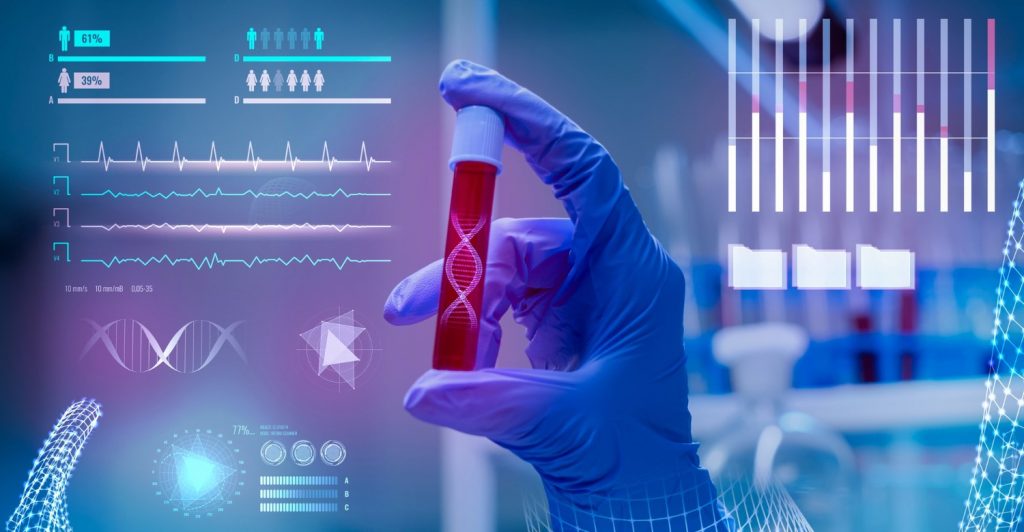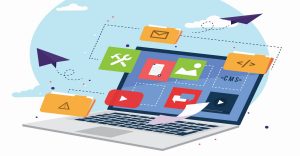Let’s address the elephant in the room – robots are coming for our jobs. “But wait,” you interject, “hasn’t anxiety about automation existed for decades?” Absolutely right. New technologies have always stoked fears of worker obsolescence, from the steam engine to the ATM. But this time, it might be different. Meet your latest co-worker – artificial intelligence. From Google’s DeepMind beating the world’s top Go player to Apple’s Siri scheduling your meetings, AI has advanced leagues beyond previous automation. Make no mistake – the AI revolution is here, and it promises to reshape the workforce as we know it. This special report will help you make sense of the changes ahead. We’ll time travel through work’s evolution to understand how we got here and where we’re headed. We’ll hear arguments from AI pessimists like Elon Musk and optimists like Accenture, who believe new human-machine collaboration models will emerge. And we’ll equip you with insights to future-proof your skills and career in the age of thinking machines. The robots are coming, but thanks to reports of my obsolescence, I’m still deciding whether to outsource this intro entirely to AI. Let’s dive in.
Table of Contents
The Evolution of Work
The Past: Industrial Revolution and Job Transformations
Adopting new technologies has always overlapped with transformations in the labor market throughout history. The first industrial revolution in the late 18th century saw the mechanization of production through water and steam power. This shifted labor from agriculture to factories, giving rise to new roles like machine operators. In the early 20th century, the widespread adoption of electricity and mass production via assembly lines during the Second Industrial Revolution again reshaped work. Manufacturing jobs increased while clerical work also grew.
More recently, the computer revolution of the 1970s and 1980s led to an increase in both high-skill and low-skill service jobs, even as middle-skill routine appointments declined due to automation. Each leap in technological capabilities thus resulted in existing jobs and skills becoming obsolete, yet also generated new kinds of work. The World Economic Forum notes, “Throughout history, technological progress and innovation have created more jobs than they destroyed.”
The Present: AI’s Current Role in the Workforce
While still in its initial days, AI is already enhancing or replacing human labor across various occupations. According to a recent survey, 50% of companies report adopting some AI technology like machine learning or natural language processing. AI assistants like Siri, Alexa, and customer service chatbots now regularly interact with consumers. In knowledge work, AI programs can automate document processing and analytics. In factories, AI optimizes supply chains and powers robotics. In security, AI performs surveillance and threat detection.
Analysts estimate that anywhere from 10 – 50 percent of tasks at most jobs could be automated using AI within the next decade. The more routine and rules-based the job, the higher the potential for disruption. This underscores the need for workers to be prepared to collaborate with increasingly intelligent machines.
The AI-Driven Transformation
Job Disruption vs. Job Creation
There is extensive debate around AI’s ultimate impact on jobs. Some predict catastrophic unemployment due to the automation of repetitive tasks and roles. A famous 2013 study by Oxford University academics estimated that 47% of U.S. jobs were at high risk of computerization. Some companies are already implementing significant labor-saving AI solutions. For example, at State Farm Insurance, robotic process automation reduced the human workforce doing specific manual tasks from 650 to 60 employees.
However, others counter that concerns of technological unemployment are exaggerated. A report by PwC found that AI could displace roughly 7 million existing jobs in the UK by 2037 but also create 7.2 million new ones – a net positive effect. History shows it is hard to predict positions made redundant by technology compared to new opportunities created. For example, only some futurists predicted the rise of app developers, social media managers, and online content creators driven by the Internet revolution.
According to the World Economic Forum, job losses will be offset by three critical factors – creating new product categories, stimulating demand due to lower prices and productivity gains, and ongoing labor needs due to demographics and market growth. The issue is not necessarily massive unemployment but a turbulent transition period requiring rapid adaptation.
AI and Skill Evolution
How AI transforms the skills needed to perform them is more important than the number of jobs. Demand will grow for abilities robots currently lack, like creativity, critical thinking, collaboration, communication, and emotional intelligence. There will be less need for skills like data collection and processing, which can be automated. Lifelong learning to keep pace with technology will be essential. A study of 14,000 employees globally found continuous learning is now their top workplace needs, ahead of even pay.
Some organizations are already responding proactively to upskill employees. For example, a major tech company’s AI training program provides over 100 hours of course material to develop in-demand AI skills for thousands of its workers. A large telecom company is spending $1 billion annually to retrain over half its workforce for the future. Efforts aligning talent with AI adoption are vital to enabling human-machine collaboration rather than total replacement.
Preparing for the Future of Work
The Role of Education and Training
Education systems must evolve from just focusing on degrees to embracing lifelong learning. Curricula must move beyond equipping students with current technical skills to fostering adaptability and knowledge application – skills rated as most important for the future of work.
Policymakers are advised to increase investment in mid-career worker training programs and data science education. France has already allocated 1 billion euros to AI skills initiatives. Governments must also incentivize on-the-job training by companies. Industry groups play a role in creating skills frameworks. For example, an AI coalition developed curriculum guidelines for universities used globally.
AI Ethics and Governance
The rise of autonomous intelligent systems at work raises important ethical and governance considerations for organizations:
- AI bias and fairness – AI systems trained on biased data can discriminate against certain groups. Firms must ensure diversity in training data.
- Transparency and accountability – Decisions made by opaque “black box” AI must have traceability for human oversight.
- Privacy protection – AI leveraging user data raises concerns around consent and misuse. Strict controls are vital.
- Job displacement – Practical measures, like employee retraining and gradual AI adoption, are needed to avoid excess job losses.
- Human values and oversight – Keeping humans in control of autonomous systems through checks and balances helps retain accountability.
To address these concerns, many organizations now employ ethics officers to oversee AI development. Some countries have also enacted regulations – for example, Illinois state introduced an AI Video Interview Act to protect job candidates’ privacy and ensure bias transparency in video hiring. Overall, however, current laws lag behind the rapid spread of AI – underscoring the need for well-thought-out policies and governance.

Navigating the Future of Job Market
Job Market Strategies
For individuals, the uncertainties of the AI future require proactive career planning and reskilling. Some tips include:
- Focus on developing creative and interpersonal skills valued by employers that AI lacks. Subjects like arts, psychology, and philosophy will grow in relevance.
- Seek opportunities to gain experience collaborating with intelligent machines to become comfortable with human-AI teamwork.
- Take personal responsibility for continuous learning. Make use of both company and external training in future-proof skills.
- Develop a flexible and adaptive mindset. With lifelong careers spanning multiple jobs becoming the norm, mental agility and a willingness to learn new things are critical.
- Explore alternative work arrangements like freelancing, which may suit those who prefer portfolio careers. The ability to directly market one’s skills will be advantageous.
Industry-Specific Insights
AI’s impact differs across sectors. Here are insights into industries being changed:
Healthcare – AI automates time-consuming tasks like paperwork, enabling more efficient patient care. It also aids diagnosis by detecting anomalies in scans and data. New roles like AI assistants and data teams are emerging.
Finance – Banks use AI chatbots for customer service and robo-advisors for wealth management. Fraud detection and credit analytics are also being automated. Demand is rising for financial technologists.
Manufacturing – AI optimizes production planning and predictive maintenance, while robotics automates routine physical work. Skilled roles like robot technicians are rising.
Retail – AI powers recommendation engines, chatbots, and inventory management. Cashier and stocking jobs may decline, but skilled tech roles will offset this.
Marketing – AI informs data-driven campaigns via predictive analytics and personalization. Creative roles retain value by ideating overall strategies.
The common theme is using AI to free up human time from repetitive tasks to focus on higher-judgment creative jobs and skills. However, those lacking the right skills risk displacement – highlighting continuous reskilling as key.

Embracing the AI-Driven Future of Work
The AI revolution is set to drive significant changes in the world of work. Some jobs and skills will inevitably be substituted as intelligent machines perform specific tasks, leading to transitional turbulence. However, AI also promises to generate new jobs and skills and enhance existing work. Ultimately, by combining the strengths of humans and machines, AI enables us to achieve more.
The future of work is about more than competing with algorithms but learning to cooperate effectively with them. Individuals and institutions that embrace upskilling and adaptation will prosper. But, there must be thoughtful governance to ensure fairness, transparency, and human control over autonomous systems. Those looking for opportunities while being mindful of the risks are best positioned to thrive in the age of AI.
Frequently Asked Questions
Q1. What are some examples of new jobs created by AI?
A1. Some emerging roles driven by AI include machine learning engineers and data scientists to develop AI applications, business analysts to interpret AI results, robot maintenance technicians to service intelligent machines, and data ethicists to monitor AI fairness. Entirely new jobs may also be created that we still need to envision.
Q2. Which skills are most important for the future with AI?
A2. The World Economic Forum identified strengths like critical thinking, creativity, collaboration, complex problem solving, emotional intelligence, and cognitive flexibility as the top skills needed given AI’s capabilities. Technical skills like programming and data science will also retain importance alongside these human skills.
Q3. How can companies prepare their workforce for an AI future?
A3. Organizations can start by assessing which jobs and skills will likely be automated versus augmented by AI. They should then provide training programs to upskill employees, focused on future-proof abilities that enable working with AI. Slow and transparent implementation of AI also helps manage the impact.
Q4. What career advice would you give a young person today regarding AI?
A4. I encourage continuous learning and developing versatile human skills that complement AI, like creativity and emotional intelligence. Gaining interdisciplinary exposure beyond a core technical field also helps keep options open. Maintaining an adaptable mindset and lifelong learning is crucial in navigating the rapid changes ahead.
Q5. Are we headed towards a jobless dystopian future with AI?
A5. While concerns of technological unemployment exist, history shows that new jobs and skills also emerge with innovation. With prudent management, AI can create opportunities for moving beyond repetitive work into more meaningful roles. The future of work is not predetermined – with responsible development and policies, we can create an AI-powered world that benefits all.




